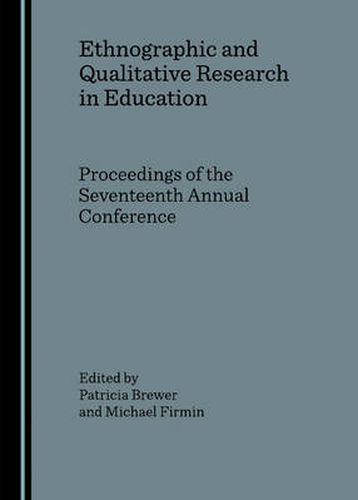Readings Newsletter
Become a Readings Member to make your shopping experience even easier.
Sign in or sign up for free!
You’re not far away from qualifying for FREE standard shipping within Australia
You’ve qualified for FREE standard shipping within Australia
The cart is loading…






Inquiry into the complexity of human interaction is the basis of educational research. How do we determine the circumstances of interaction that lead to relevant and productive learning environments? How can we begin to address the complexities of diversity in our interactions with learners, parents, and each other? How do we obtain needed skills for interpreting the dialogue that accompanies our work? The first part of this volume [chapters 1-6] explores the theme of communication and interaction in very diverse settings, from the tennis court (Arem) to the architect’s studio (Popov).
Two studies review cultural factors associated with student life on college campuses (Hughey and Sims) while Sperry, et.al. and Yamakawa, et.al. focus specifically on the role of dialogue. Action research, that which is designed to fill the gap between theory and practice, is represented in the second section [chapters 7-12]. Here, researchers explore a variety of professional concerns but are particularly focused on improvement of teacher education, whether at the point of preparation (Capobianco, et.al.), early professional experiences (Hamilton and Rademaker), or teacher continuing education (Hampton, et.al. and Raffanti). Palladino and Swafford examine educator-family relationships and factors that may affect that aspect of professional work.The collection appropriately closes with a series of projects that examine the instruction of qualitative research methods at colleges and universities [chapters 13-15]. As Peter Demerath notes in the keynote address, ethnographic and qualitative research methods continue to be scrutinized heavily in this age of education accountability. Current trends and predictions of what works rarely agree that evidence from qualitative inquiry is sufficient to explore important issues of teaching and learning. Through qualitative study, however, educators can systematically evaluate the learning environment, the instructional methods, and the results of students’ collective experience. Improving the instruction of qualitative methods becomes an essential part of our curriculum, as well as a tool for our own professional practice. In this section, Firmin provides an introduction to teaching the reiterative process of qualitative inquiry and Zagumny reports on initiatives to promote qualitative inquiry in a technology school setting that prefers quantitative inquiry. Hockett, et. al. provide a rich description of
double loop learning through a research project that documents the experiences of instructors and students who are engaged in a qualitative methods course. All represent the inextricable link between process and content, that which forms the foundation of qualitative research in education.
$9.00 standard shipping within Australia
FREE standard shipping within Australia for orders over $100.00
Express & International shipping calculated at checkout
Inquiry into the complexity of human interaction is the basis of educational research. How do we determine the circumstances of interaction that lead to relevant and productive learning environments? How can we begin to address the complexities of diversity in our interactions with learners, parents, and each other? How do we obtain needed skills for interpreting the dialogue that accompanies our work? The first part of this volume [chapters 1-6] explores the theme of communication and interaction in very diverse settings, from the tennis court (Arem) to the architect’s studio (Popov).
Two studies review cultural factors associated with student life on college campuses (Hughey and Sims) while Sperry, et.al. and Yamakawa, et.al. focus specifically on the role of dialogue. Action research, that which is designed to fill the gap between theory and practice, is represented in the second section [chapters 7-12]. Here, researchers explore a variety of professional concerns but are particularly focused on improvement of teacher education, whether at the point of preparation (Capobianco, et.al.), early professional experiences (Hamilton and Rademaker), or teacher continuing education (Hampton, et.al. and Raffanti). Palladino and Swafford examine educator-family relationships and factors that may affect that aspect of professional work.The collection appropriately closes with a series of projects that examine the instruction of qualitative research methods at colleges and universities [chapters 13-15]. As Peter Demerath notes in the keynote address, ethnographic and qualitative research methods continue to be scrutinized heavily in this age of education accountability. Current trends and predictions of what works rarely agree that evidence from qualitative inquiry is sufficient to explore important issues of teaching and learning. Through qualitative study, however, educators can systematically evaluate the learning environment, the instructional methods, and the results of students’ collective experience. Improving the instruction of qualitative methods becomes an essential part of our curriculum, as well as a tool for our own professional practice. In this section, Firmin provides an introduction to teaching the reiterative process of qualitative inquiry and Zagumny reports on initiatives to promote qualitative inquiry in a technology school setting that prefers quantitative inquiry. Hockett, et. al. provide a rich description of
double loop learning through a research project that documents the experiences of instructors and students who are engaged in a qualitative methods course. All represent the inextricable link between process and content, that which forms the foundation of qualitative research in education.